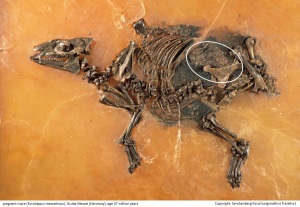The Elachistocene Epoch of the Chthulugene Period of the Ecozoic Era November 26, 2014
Posted by Jill S. Schneiderman in Anthropocene, Chthulugene, Ecozoic, Elachistocene, Eremozoic, geologic time.add a comment
|
Era: Eremozoic or Ecozoic (after E.O. Wilson or Thomas Berry)
|
Period:
Chthulugene (after Donna Haraway) |
Epoch:
Elachistocene (Schneiderman 2014) |
If one accepts the idea that there is indeed convincing geological evidence for a new geological epoch (and I place myself in that camp) then there is obviously a need to name that epoch. However, geoscientists are not the only people who are entitled to challenge the proposed name and suggest alternatives. The history of science has shown that it is healthy for science to endure questioning about nomenclature from within and outside of the scientific community. I agree with those who critique the proposed term “Anthropocene” for using the species category in the Anthropocene narrative. Inequalities within the species are part of the fabric of the planetary environmental crisis and must be acknowledged in efforts to understand it.
Perhaps we should propose a name that is consistent with previous schemes of naming segments of the geologic time scale. Understanding the consistent semantics (as opposed to the inconsistent rationale for names of Periods of the Paleozoic and Mesozoic) is an important tool for settling on a name that achieves the purpose of acknowledging a new epoch while at the same time avoiding the pitfall of the homogenization all of humanity.
As many people know, the suffix –zoic means “life” thus, Paleozoic is ancient life, Mesozoic equates to middle life, and Cenozoic refers to new life. The epochs of the Periods of the Cenozoic Era are named to indicate the proportion of present-day (Holocene) organisms in the fossil record since the beginning of the Cenozoic era roughly 65 million years ago. Paleocene is derived from the Greek word palaios, meaning “ancient” or “old,” and kainos, meaning “new”; Eocene from eos meaning “dawn” of the new; Oligocene from oligos meaning “few” or “scanty” new; Miocene from meion meaning “less” new; Pliocene from pleion meaning “more” new; Pleistocene from pleistos meaning “most” new, and; Holocene from holos meaning “whole” or “entirely” new. Therefore, why not label the new epoch with a name that acknowledges the much less contested sixth extinction and increased diminishment of species on Earth in this epoch? What could we name such an epoch?
When I asked my colleague Rachel Friedman, a classicist, what would be the Greek for diminished amount of new life she explained that the antonym of pleistos (as in Pleistocene) would be elachistos and would be the prefix that might help me come up with a name that would acknowledge the diminished amount of species compared to the Holocene epoch. Though it isn’t the most elegant English, Elachistocene would mean “least amount of new” and I propose that name instead of Anthropocene for it adheres to the geological schema yet avoids the homogenization of humanity so problematic in the term Anthropocene.
Though I would make a friendly amendment to feminist scholar Donna Haraway’s suggestion to name the new epoch the Chthulucene (“subterranean born”) and propose Chthulugene as the name for the Period to which the Elachistocene belongs, might we take the opportunity of naming our new geological epoch to consider the designation of the Era as well? Theologian and scholar Thomas Berry wrote prolifically, pushing what he called “The Great Work” — the effort to carry out the transition from a period of devastation of the Earth to a period when living beings and the planet would coexist in a mutually beneficial manner; the result would be the erosion of the radical discontinuity between the human and the nonhuman. This vision of the Ecozoic stands in stark contrast to the notion of the Eremozoic Era imagined by renowned entomologist E. O. Wilson – the Age of Loneliness when other creatures are brushed aside or driven off the planet.
More Than Old Bones November 18, 2014
Posted by Jill S. Schneiderman in Anthropocene, earth community, Ecozoic, geologian.add a comment
A recent Scientific American article published the remarkable image of a fossil of the early horse species Eurohippus messelensis unearthed from strata at a one-time site of oil-shale mining in Messel, Germany. Though well-known for the remarkable array of Eocene epoch (roughly 48 million years ago) organisms entombed in those strata, the early horse fossil standouts among the others; the fossil preserves the bones of a mare and her unborn foal (circled in the image above) in their correct pre-birth anatomical positions.
The find reminds me that fossils of extinct organisms are the remains of entires species, not just the bones of individuals. Each organism traversed an arc from birth to death and in the process reproduced members of its own species. Darwin helped human beings see this and evolutionary biologists and paleontologists that succeeded him have theorized the mechanisms that allow the reproduction of species. But this fossil makes visible reproductive capabilities of our more distant vertebrate ancestors. What’s more, the fossilization of a pregnant foal calls to mind the reality that, in the Anthropocene epoch marked by the sixth major mass extinction of life on this planet, human beings must admit the questionable ability of organisms living today to reproduce and survive extinction.
